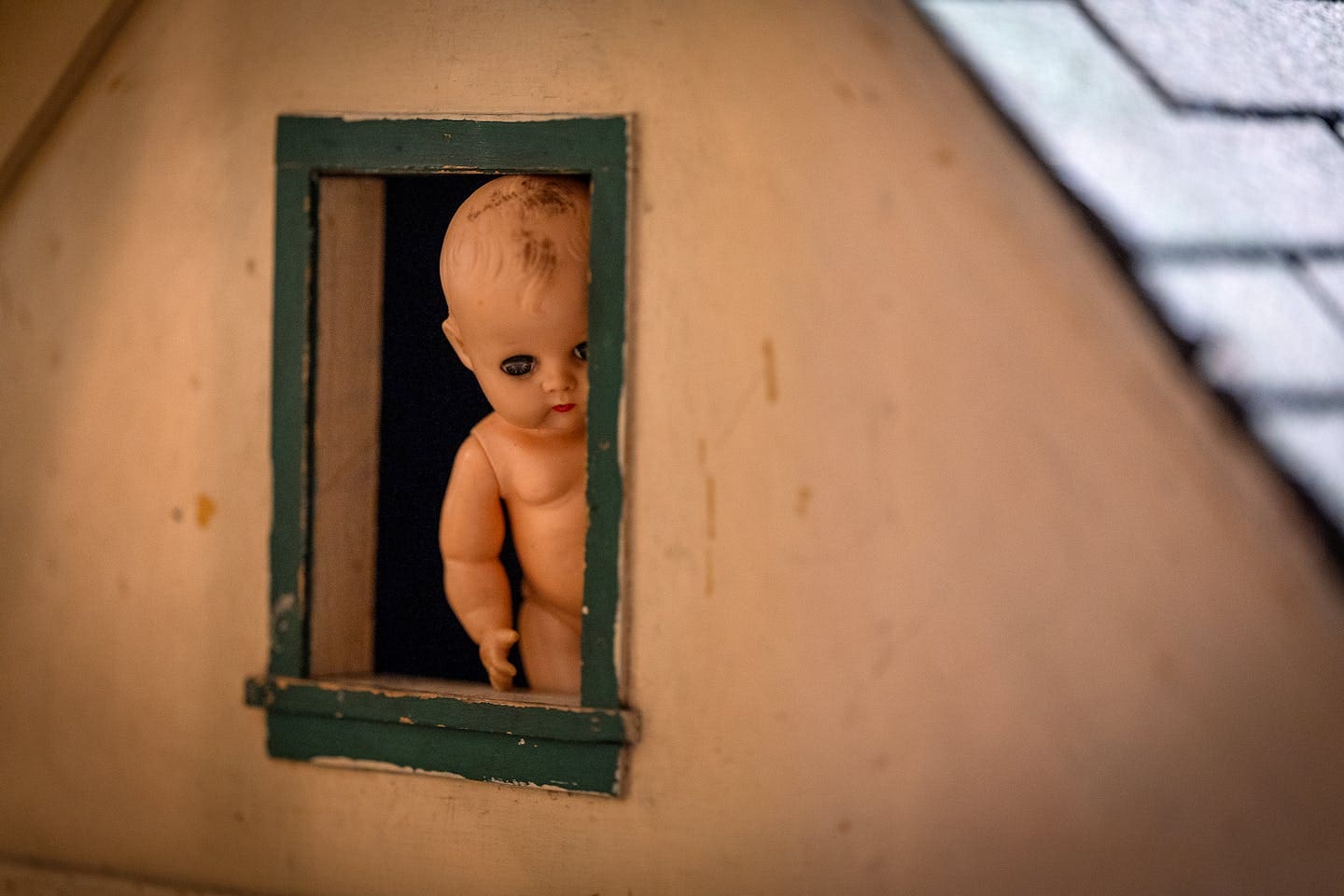ROCHESTER, MI – They’re setting the dolls loose.
Dozens of time-worn dolls and children’s toys adorn the walls, hang from the ceiling and stare up from the floor, some in faded dollhouses more than a century old.
The History Center of Olmsted County’s Creepy Dolls collection — which since 2019 has drawn international attention from the likes of CBS to Smithsonian Magazine — is evolving this year, allowing more than just the dolls to fascinate and unnerve this Halloween season.
Long-ago-loved cast-iron toys in display cases, examples of crude prosthetics Mayo Clinic offered patients decades ago, even World War II-era gravestones. It’s an opportunity the museum is relishing to show new audiences much more of its collection — creepy or not — in hopes of drawing them back throughout the year.
“Some of these pieces haven’t been shown in decades, if ever,” said curator Chris Delisle.
Delisle is not a fan of the word “creepy,” which the museum coined. Rather, he said, these dolls were once cherished toys, many crafted by hand for children who grew up in the area, lived here and have since passed on.
They represent the culture of an era lost to time: What items remain may have decayed, but the stories they embody live on.
“The point is always that people are learning and getting to experience our past,” said Valerie Wassmer, the History Center’s executive director.
The museum’s collection of more than 140 dolls have gone on display across Rochester and at events leading up to Halloween, along with popular social media posts seeking votes for the “creepiest” doll.
But Wassmer said the History Center’s staff wanted a full-fledged attraction as it works toward a massive expansion over the next few years.
To that end, Delisle decided to use the dolls to showcase items that seem to have been forgotten — or in some cases were unknown. Archivists have spent the past few years identifying how some of the thousands of items at the History Center got there to begin with, unraveling local mysteries.
The work comes as county historical societies across the state update their own archives and catalogs, looking for better ways to share histories in the digital age.
That’s part of the reason Delisle decided to use the gravestones in the Creepy Dolls display. Gravestones are commonly destroyed when they are replaced, but for some reason someone donated these duplicate headstones from Minnesota service members who died overseas and were later transported home.
“We think that they had a stone created when they passed where they were, and when the bodies were moved back … the new stones are put in place and then somehow somebody got these,” Delisle said. “This is very rare. If a graveyard gives up a stone, it’s mandatory it should be destroyed because they don’t want people collecting them.”
Delisle said he couldn’t figure out how or why the gravestones came into the History Center’s possession; neither veteran appeared to have connections with Olmsted County, and he could find no direct link between the two families.
Yet he wanted to showcase the gravestones, in part for the obvious atmosphere they would bring to the exhibit, but mainly because of the work done to rediscover their history and to share how they ended up here.
“I feel philosophically and fundamentally like I’m doing them justice,” he said. “You have to know what the story behind these are.”
Those items could range anywhere from models and carvings to old lanterns and gifts to the Mayo family. Charles W. Mayo, the son of Mayo Clinic co-founder Charles H. Mayo, received a bevy of historical items from around the world over the years including a purse made from an armadillo hide, with its tail curved upward to form the handle.
Another such gift, one that would require conversation and planning before being put on display, is a piece of Sairenji Temple in Hiroshima that was struck by the atomic bomb on Aug. 6, 1945, killing an estimated 140,000 people. The temple’s head priest was known to give roof tiles and other pieces struck by the blast to visitors and dignitaries in the years after the war, which is likely how Mayo ended up with the piece.
“We’ve got 30,000 or so artifacts and there’s no way we can rotate them through fast enough … so this is pure genius,” Wassmer said.
The exhibit has opened, and the dolls will take to social media to showcase other items the History Center wants people to rediscover.
“To me, it’s not about scary dolls,” Delisle said. “It’s about the really neat history that the artifacts tell.”
©2025 The Minnesota Star Tribune. Visit at startribune.com. Distributed by Tribune Content Agency, LLC.




